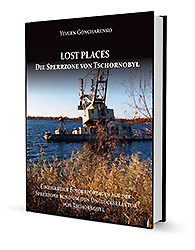 Iwaki City, December 24, 2011. At 9 AM we finished shooting at the Hisanohama port and return to Onahama, Iwaki. We are going through coastal areas, which were completely destroyed by the tsunami in March 11, 2011. Construction machinery works and there are many new, rebuilt homes at the area. The entire coast is a large construction site. Ganbarou Fukushima!
Iwaki City, December 24, 2011. At 9 AM we finished shooting at the Hisanohama port and return to Onahama, Iwaki. We are going through coastal areas, which were completely destroyed by the tsunami in March 11, 2011. Construction machinery works and there are many new, rebuilt homes at the area. The entire coast is a large construction site. Ganbarou Fukushima!
Ganbarou (頑張ろう, がんばろう)
Ganbarou – it is not just a word, is the quintessence of Japanese mentality. I think it is a bit difficult to translate it into other languages. It is sometimes translated as “try”, “fight”, “don’t give up”. But this expression is much more capacious. It means “to try hard to achieve the best possible result” and can also aimed at ourselves like “Let's do our best!” or “Let's all hang tough!” No matter what you do, deliver mail, catch a fish or grow rice – you should “Ganbarou!” And at the same time, if you say to someone “ Ganbarou!”, therefore you not only ask him to do not give up but you also believe in his strength and express your support.
Throughout our trip in Fukushima, when I saw how the destroyed by tsunami areas rebuilt, how people trying to decontaminate radioactively contaminated schools and kindergartens, talking with volunteers-dosimetrists, this word was constantly running in my head.
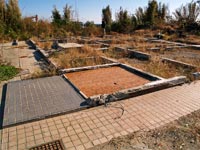 |
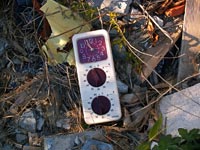 |
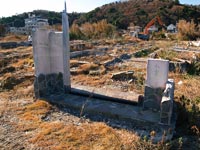 |
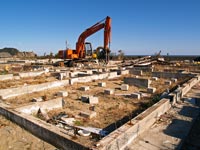 |
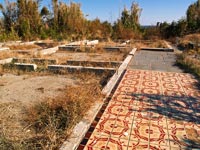 |
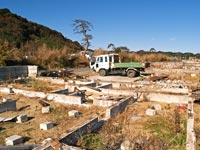 |
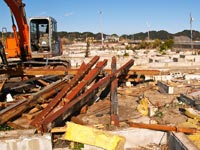 |
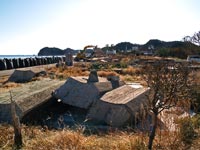 |
 |
By 11 o'clock we have reached the spectrometric laboratory “Iwaki Radio-Proof Centre”. And although there is quite official Iwaki Environmental Monitoring Centre, local residents decided to organize another “own” centre. “Fukushima Children’s Fund” purchased for laboratory two spectrometers: German LB 2045 from Berthold Techologies GmbH & Co. KG and Belarusian Gamma activity monitor AT1320A from Atomtex and the Whole body counter AT1316, also from Atomtex. Now people bring here to “measure” all that grows in their gardens or bought at the market. At the end of December 2011, waiting list for measurements reaches the end of March.
The laboratory occupies a small room in an office building. Head of the laboratory – Ms Keiko Suzuki, beautiful, sophisticated woman with a charming smile.
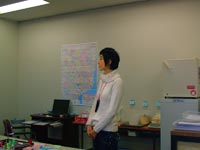 |
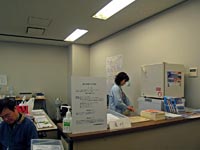 |
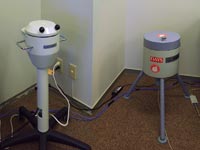 |
Lab opened in mid-July 2011 and looking through diary of air, water and food measurements, we can estimate the time history of the composition and concentration of radionuclides. If during the first weeks of lab’s work there still was 131I in samples; then now, nine months later only 134Cs, 137Cs and natural radionuclide 40K detected. From all the foods the largest concentration of caesium is in the local fish.
On a table in the laboratory there is a basket with small bags. This is salt and spices mix, sent as a gift from Hiroshima. Visitors can buy this small bag of salt for 100 yen (about 1 Euro) and that money goes to support the centre. We bought a bag. It smells wonderful.
Coming from the lab back to the hotel we saw a group of people carefully washes small section of the road... Decontamination? Our team looks at me questioningly: “How much is here? Dirty? What’s the level?” I'm confused. My search dosimeter MKS-11 “Spectra” shows quite ordinary 0.18-0.2 μSv/h. We come to Mr Seiichi Aoki, chief of people who make deactivation.
– We live here, and by this road our children go to school. We know that the level of gamma background should not exceed 0.2 μSv/h, but here in one place we have measured 0.21 μSv/h. We can't take any chances with our children, so this place will be washed to 0.2 μSv/h at least.
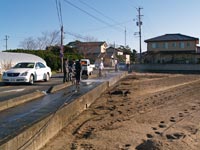 |
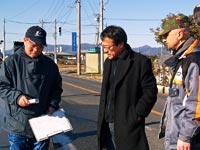 |
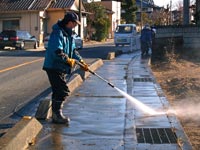 |
We return to our hotel in Taira. Tomorrow, December 25th, at 5 AM we will go to Minamisoma (南相马市), a city on the border of the 20-kilometre evacuation zone around Fukushima-Daiichi Nuclear Power Plant.
| Zone Edge. Minamisoma (南相馬市). Fukushima Prefecture. Day Four< Prev | Next >Hisanohama, Iwaki (いわき市). Fukushima Prefecture. Day Three |
|---|








